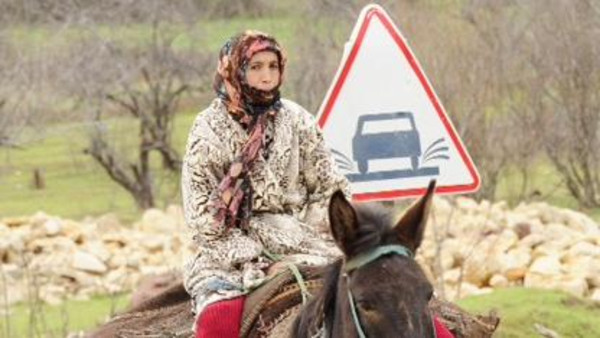علاقة قرارات الفلاحين الزراعية بتمثلاث التغيرية المطرية الفصلية بالبيئات شبه الجافة بالمغرب: حالة سهل “عبدة”
Relation of farmers’ decisions to their representations of seasonal rainfall variability in semi-arid environments of Morocco: The case study of “Abda” plain

اعداد : وفاء كامل محمد الأسعد
- المركز الديمقراطي العربي
- مجلة الدراسات الأفريقية وحوض النيل : العدد التاسع أيلول – سبتمبر 2020 ,مجلد 03 مجلة دورية علمية محكمة تصدر عن #المركز_الديمقراطي_العربي ألمانيا – برلين .
-
تُعنى المجلة بالدراسات والبحوث والأوراق البحثية عمومًا في مجالات العلوم السياسية والعلاقات الدولية وكافة القضايا المتعلقة بالقارة الأفريقية ودول حوض النيل.
Journal of African Studies and the Nile Basin
للأطلاع على البحث “pdf” من خلال الرابط المرفق :-
ملخص :
تعتبر التغيرية المطرية أقوى وأخطر التحديات الطبيعية التي تواجهها البيئات شبه الجافة، خاصة أنها تشمل 60% من الأراضي الزراعية بالمغرب، وحيث الفلاح المغربي يتخذ قراراته انطلاقا من تمثله للتغيرية المطرية، من أجل للتكيف معها والتخفيف من أثارها. ومن هذا المنطلق تحاول هذه الدراسة تسليط الضوء على هذا الموضوع من خلال الإجابة عن السؤال الإشكالي التالي: “كيف يؤثر تمثل التغيرية المطرية الفصلية في اتخاذ القرارات الزراعية لدى الفلاحين بالبيئات شبه الجافة من خلال حالة سهل “عبدة” ؟ تهدف هذه الدراسة إلى وصف تمثلات الفلاحين للتغيرية المطرية خلال الدورة الزراعية، ثم استجلاء علاقة قرارات الفلاحین في الزراعة في ضوء تمثلاتهم للتغيرية المطرية (التساقطات المطریة الفصلیة حسب الدورات الزراعیة). تنطلق الدراسة من الفرضية المركزية التالية: لا توجد فروقات ذات دلالة إحصائية (H0) في قرارات الفلاحين الزراعية حسب تمثل التغيرية المطرية (التساقطات الفصلية). ارتكزت الدراسة في جمع البيانات على الأسلوب الميداني، لهذا تم اختيار طريقة السحب الطبقي الأمثل لسحب عينة قوامها 262 فلاحا سنة 2015. كما اعتمدت على مقاربة مقارنة لمجالين من خلال أسلوبين من التحليل: كمي ونوعي، على مستوى الجماعة الترابية. واستعملت الإحصاء الوصفي والاستدلالي. توصلت الدراسة إلى اعتبار التغيرية المطرية الفصلية العامل الإيكولوجي الأساسي المؤثر في اختيارات الفلاحين، نتيجة عدم انتظام التساقطات كما وكيفا. وسنتبنى في هذه الدراسة منهجية (IMRAD) التي تتكون من المقدمة (I) والمنهجية (M) والنتائج (R) ثم المناقشة (D)
Abstract
Seasonal rainfall variability is the strongest and most dangerous natural challenge facing semi-arid environments, including 60% of Moroccan agricultural land to which the “Abda” Plain belongs. The farmer makes decisions based on his representations of rainfall variability, in order to adapt to it and mitigate its effects. The study attempts to answer the following question: How do the farmers’ representations of seasonal rainfall variability influence their agricultural decisions in semi-arid environments of Morocco through The case of “Abda” plain? Study aims to describe the farmers ‘representations of the rainfall variability during the agricultural cycle, then clarify the relationship of the farmers’ decisions in agriculture in light of their representations of the rainfall variability (seasonal rainfall according to the agricultural cycles). The research problem was examined using the following null hypothesis: There are no statistically significant differences (H0) in the agricultural decisions of farmers according to the representation of the rain variability (seasonal rainfall). The research adopted the field method of data collection, based on optimal stratified sampling, to draw a sample of 262 farmers during the year 2015. It also adopted a comparative approach of two semi-arid environment zones in Morocco, on the basis of two methods of analysis: Quantitative and qualitative, at the level of the territorial commune. The analysis of quantitative and qualitative data has required use of descriptive and inferential statistics. The study concluded that the seasonal rainfall variability is considered the main ecological factor affecting farmers’ Decisions, as a result of the irregularity of precipitation in terms of quantity and quality. We are going to adopt the (IMRAD) methodology, which consists of an introduction, methodology, results, and discussion.




